Snacking has a sky-high penetration, but retailers need to make space for healthier options and adventurous flavours to stay on trend.
In earlier, less time-pushed eras children were warned never to eat between meals – for fear of spoiling their appetites. But as the lines between breakfast, lunch and dinner get ever-more blurred, some busy people are now actively using snacks as meal replacements.
In fact, according to Mintel, as many as 37% of people surveyed say they swap in a snack for a ‘proper’ meal at least once a week.
HIM senior account manager Alice Dolling confirms that these key snacking customers are relatively young, working hard and without a minute to spare – all reasons they shop at their local c-store.
“The shopper on a snacking mission is younger than the average convenience store shopper (more than half are below 35 years old, versus just 30% on average),” she says.
“This goes hand in hand with the fact they are more likely to be in full-time work, so messaging in convenience stores around a ‘break from work’ snacking occasion will definitely create engagement.”
Mintel points out that overall consumption of sweet snacks peaks among under-35s and falls with age (although three-quarters of over-65s still favour them). It maintains that this means savoury snacks hold up better than the sweet stuff across all age groups.
That’s a stat that someone ought to share with the government. Over the past few years the snack industry has been under attack from regulators over the amount of sugar, salt and calories present in their products.
The government’s latest attempt to get people to cut down emerged in the ‘Look for 100 calorie snacks, two a day max for children’ campaign, which was rolled out earlier this year. There was a similar initiative in March, focusing on a ‘400-600-600’ calorie rule for adult meals, encouraging consumers to specifically leave room for snacks or drinks.
So should the average c-store retailer feel nervous about the encroaching health agenda? Maybe not, since there’s positive evidence that embracing the overall trend for health, and stocking the right selection, can actually improve category sales.
Take what Arnaud Leudjou, from Costcutter at Brunel University, has achieved at his campus store. He’s leading the way by offering his student and faculty customer base a good range of alternative snacks alongside recognised best-sellers. And he says that the reason for doing this wasn’t about appeasing the regulators, but meeting his customers’ changing needs.
“It all started with our customer satisfaction survey,” he says. “Overall, people commented that we should stock more healthy products – specifically vegan, gluten-free and low-fat products. But that wasn’t the only reason we invested in more healthy snacks. We’d also seen that sales of traditional snacks such as biscuits and chocolate bars were actually declining at the store, and so we were on the lookout for some alternatives that would work for us.”
Arnaud’s strategy isn’t about replacing what already sells well, but offering something complementary for those who want it. For example, customers can still pick up big bags of Walkers price-marked crisps in all the top flavours. But they can also buy on-trend Lentil, Hummus and Quinoa Chips, which are merchandised right next to the standard stock.
“Having a healthy eating area has been really good for us,” says Arnaud. “We tried just a couple of lines to start with – to see how they would go – and we found that they did really well with our customers.”
Sharing bags are big business
Sharing formats and new product development are a winning formula when it comes to snacking. “Snacking occasions continue to fuel growth for the sharing segment, with sharing bags making up more than 20% [Nielsen] of all consumption occasions,” says Pierre Jackson, category insights controller at PepsiCo.
“We also know that npd helps to drive the savoury snacks category as people are always looking for something different.”
Pepsico has recently invested in sharing npd with Doritos Collisions, which comprises a combination of two bold flavours in one bag. The launch follows the product’s success in the US and Canada.
Available in two varieties – guacamole & habanero chilli and honey glazed ribs & lemon blast – Collisions have an rrp of £1 per 72g bag and £1.99 per 162g bag.
To further meet this demand, Arnaud has gone big with the new generation of healthy cereal bars, buying in a decent selection from brands such as Nakd and Trek. He’s clear that this isn’t just about virtue – it delivers Arnaud some healthy profits, too.
“I’ve noticed that these products are good for margins,” he explains. “For example, the normal flapjacks we sell cost about 70p on the shelves. However, one of our new Grenade high-protein flapjacks costs £2.40. That’s almost quadruple the price – and people are keen to buy them.”
Arnaud’s success shows that doubling down on healthy snacks can definitely work. The customer satisfaction results also reveal that today healthy doesn’t necessarily mean low calorie. In fact, what people believe is good for them can vary widely.
The stats back this up. According to Mintel, 39% of active snackers look for healthy products “all or most of the time”, with frequent snackers the most keen to seek them out. The attributes they look for in healthy snacks cover everything from ‘low salt’ and ‘high protein’ to ‘all-natural ingredients’.
This on-going trend, which includes a focus on gluten-free and vegan foods as Arnaud identified, means that some c-stores are stocking products often more usually associated with health food stores.
In turn, healthier-focused stores are seeing the benefits of specialising in snacking, such as Goodfayre in Salisbury, a plastic-free ethical grocery store which sells a range of snacks alongside alcohol, frozen and chilled food.
“Noticeably, all the snacks that we do are vegan,” says Goodfayre owner Dana Burton,
“We sell the Kookie Cat range of organic vegan oatmeal and cashew cookies, for example. Vegans are just as likely as other people to want convenient food. Like myself, for example.
“I’m probably a bit more of a ‘junk food vegan’ because I work hard and don’t necessarily have the time to prepare food from scratch every night. The number of vegans is growing each year, and they want foods that are convenient, too. The big gap in the market at the moment is vegan cake – I’m hoping more of that will come along soon.”
Like many more traditional stores, Dana is feeling the pressure from supermarkets who can copy her range, then undercut her. This means she stocks what they currently don’t – including more innovative snacks such as Purl Pops, made from roasted and popped lotus seeds and other all-natural ingredients. Another winner with the store’s customers is Cheeky Monkey Peanut Butter Puffs.
“It’s interesting, because they were originally aimed at parents to give to their kids,” she says. “But they’ve now moved on to the vegan market. They’re great – and everybody loves them. We sell them to people of all ages now.”
Dana doesn’t currently stock snacks around the till to increase impulse buys. However, she has a regular snack table close to the counter that showcases products made by local producers.
“We’ve got ready-to-go snacks that are made by people near us,” she says. “These include raw snack bars (a bit like the Trek bars) and cacao food bites. We like to support local businesses and customers enjoy finding things they can’t find anywhere else. In fact, once a brand reaches the supermarkets we don’t stock it anymore.
“We’re plastic-free and some of the snacks are unpackaged so that people can help themselves. As a store, that’s very important to us.”
The mindful munch bunch
You might be forgiven for believing that most c-store shoppers want something speedy to scoff before they hit the office. But as Forest Feast founder Michael Hall maintains, a growing number want to be more mindful about snacking.
“There’s a number of trends driving the snacking category, but predominantly it comes down to three fundamental areas: an appetite for more mindful options; a demand for authenticity; and the UK’s growing sharing culture,” he says.
To meet this market the company introduced Fruit Balls, available in mango & coconut, pineapple, mango & lime, and milk chocolate mango & coconut, earlier this year.
“This is all about adapting to a changing market,” he says. “It’s delivering wellness in ways our consumers want – whether that be coated in chocolate as a snacking ‘reward’, a nibble al desko, or on the move. And if it looks pretty so individuals can share their new discovery on social media and tell their friends, then even better.”
Also making waves is Eat Real, the brand behind gluten-free, lactose-free, vegan and Kosher snacks such as Hummus, Lentil and Quinoa Chips. It recently expanded the range with new flavours including mango & mint, sweet chilli and paprika packs.
“The growth in demand for healthier snacking is largely driven by Millennials and the Netflix generation, whose shopping habits and socialising decisions are more spontaneous,” says Eat Real director of commercial sales and marketing Debbie King.
Fifteen years ago, products such as Dana’s best-selling Purl Pops probably wouldn’t have found favour with most c-store customers. But this is changing, as consumers want to try something new.
“I think that people still buy [traditional crisps flavours], but tastes have definitely changed,” says Arnaud. “Before, we sold a lot of Walkers and McCoy’s, in flavours such as cheese & onion. Now we’re seeing a move to more spicy crisps, such as Doritos chilli heatwave and Sensations Thai chilli. We actually sell more of those flavours than we do traditional crisps.
“Also, Cheetos are a big seller for us at the moment – and they all take away sales from ready salted.”
Things are also getting spicy in Southampton. A quick glance at Richard Inglis from Parkview Retail’s order sheets shows up more leftfield treats. For example, products that have recently caught his eye include Walkers Poppables sweet chilli, Sensations mango & red chilli and Sensations Street mixed Mumbai.
Away from the norm
Both Arnaud’s and Richard’s stores serve a large student population, which may account for more adventurous tastes. Yet Richard maintains that it’s all about offering your average punter something different to crunch from the usual selection.
“I think it sets my stores apart from anyone else’s,” he says. “Okay, with some of them we might not make a fortune, but the idea is that if you’re a regular customer you can come in and get something totally different.
“It grabs your eye, and makes customers think ‘you know what – I’ve never tried that, I’ll give it a go’. Granted, they might get it home and think ‘I’m never buying that again’, but equally they might think that it’s the most amazing thing ever and love it.
“That’s what it’s all about for us – making the shop an experience. I think it would be really boring if all you had on your crisps aisle was cheese and onion.”
Boring or not, the right snacks can be a great gateway into the wider food market. For example, incorporating crisps or nuts within the food-to-go category is a super- smart way to capitalise on their instant appeal, while making your store a sought-after lunchtime destination.
“Aside from drinks to go, snacking is the biggest element of the food-to-go mission,” explains Dolling.
“Food to go has a lot of potential in convenience, but is currently missing out on the growth that other areas of the eating and drinking market are experiencing. Snacks to go could be a potential place to focus on to grow this sector, as other food outlets perhaps specialise more on meal-based products.”
It’s a point that’s certainly not lost on Richard. To capture this crucial market he’s put a meal deal at the heart of his midday offer.
“We definitely do a meal deal at lunchtime as it works really well for us,” he says. “It’s £3.50 for a sandwich, drink and a snack, which isn’t bad. And that snack can be anything from fruit, to crisps, to a flapjack. People just like the fact that they’re getting value for money and the snack is a big part of that. It’s a no-brainer.”
As Christmas approaches, this core value-for-money approach gets spread across the frozen and chilled components of his snacking selection, too.
He explains that there’s usually a ‘three frozen snacks for a tenner’ deal (or something very similar) that allows customers to create their own menu of party nibbles from his offer.
“Snacking is such a wide category that’s more than crisps. It reaches across frozen and chilled, too. If you have the right stock then people like to play with it a little,” he says.
“So we’ve also got loads of chilled snacking ranges that we bring in near to Christmas. It’s things like mozzarella bites, mini burgers and tempura prawns. That’s a mixture of chilled, fresh and frozen – so it’s a huge chunk of what we do in the store.”
Trends - A preference for premium
Posh nosh is going mainstream as c-store consumers trade up to products that offer something different to the usual crisps and nuts.
“These days customers are far more discerning when choosing food and drink,” says Katy Hamblin, Pipers Crisps marketing manager.
“Increasingly, they’ll actively seek great-tasting premium snacks or healthier options in preference to value snacks whenever there’s a choice. This is particularly true for the food on the go sector and the lucrative Big Night In.”
To fully capture the health crowd, Pipers has launched a new range focused on British peas. Pipers Crispeas are available in three artisan-focused flavours – matar paneer, salsa verde and English mint .
Meanwhile, fine food distributor RH Amar is adding excitement to its Crespo olives portfolio with two 150g pouch sharing products. Dry black olives and tomato, cumin & parsley green olives have an rrp of £1.99.
Moving away from the heatable hors d’ oeuvres, customers’ hunt for fun party snacks also crosses over to his crisp offer, with tempting seasonal one-offs.
“This Christmas we’ve got some Co-op Tortilla Christmas Trees on order,” he says. “It’s a really nice Christmas-themed bag – and it’s great that customers can come in and get something unique to share with friends or family.”
Meanwhile, in the ongoing war between the Health Police and hungry consumers, pack size has become collateral damage.
For a while now brands have justified super-sized packs by claiming they’re ‘share bags’ – although how many people they’re shared between may be a moot point. The powers that be, with one eye on calories and portion sizes, would prefer us to snack on something smaller.
As usual, what wins out on c-store shop floors depends on the tastes and desires of everyday customers.
“For us in our stores it’s certainly not about the small bags of crisps anymore – it hasn’t been for a while now,” says Richard.
“We sell far more of the grab bags and family sharing packs. Doritos obviously does really well for us right now, and Co-op does some good solid own-brand ones.”
Elsewhere, over at his campus store, Arnaud says that it’s more compact on-the-go snacks that win the day.
“What we’ve found is that, especially in the university campus environment, people want to buy smaller packets of crisps and other snacks. Most of our sales of snacks are at lunchtime and so people want something that’s easier to eat on the go.”
“After we tried a couple of things we found that smaller packs actually do well for us in terms of sales. So, for instance, rather than do bigger portions of cake we do little slices, pre-wrapped, that cost £1 each.”
Mintel reports that, in the cut-throat battle for snacking innovation, packaging – as well as pack size – could be central to boosting sales. It reveals that putting the spotlight on easy-open features makes snacks appear more suitable for munching on the go. This would be welcome news for the 38% of over-55s who favour easy-open packaging, so they don’t have to faff around as much with their food.
With snacks, what you stock in-store can make or break the category – which is why it’s important to pay attention to current trends. Where you merchandise it around the store can also be essential to boosting your bottom line.
Cross-merchandising is a canny strategy to increase basket spend, as Matt Collins, sales director for convenience, wholesale, discounters and foodservice at KP Snacks, explains.
“Site crisps, snacks and nuts next to categories that shoppers buy together most frequently – for example, 44% of snack shoppers will also buy soft drinks,” he says.
“Also, secondary site bagged snacks with key categories such as soft drinks, sandwiches and BWS.”
As well as promoting proximity to soft drinks, wine and beer, it can pay dividends to merchandise snacks next to your coffee machine, too. HIM’s Dolling says the hot drink and snack combo could be an untapped area for many c-stores.
“Snacking shoppers are almost 70% more likely to purchase a hot drink to go and therefore there could be a potential [for cross-merchandising] here,” she says.
Wherever you choose to site snacks, one thing’s for sure: as an impulse product customers need to be able to grab them and go. This goes double if you’re in a high footfall area like a bus station.
“That’s the main thing with snacks,” says Geoff Sharp, co-owner of Save Local in Colchester, Essex.
“It’s simple: you just have to have the main flavours – exactly what people want – and put them where they can get them easily. We have the snacks and nuts at the sides of the shop, and they just fly off the shelves as people come to the till, it’s amazing.”
He adds that stocking pricemarked packs is a definite winner. “The £1 pricemarked-packs do especially well – people love a bargain and they’re just at the right price point for us.”
Protein muscles in on snacking
Along with free-from and fat-free, Mintel identifies ‘high in protein’ as an on-pack claim consumers now associate with health.
That’s great news for brands that package it in convenient to-go formats, such as Kerry Foods.
“Kerry Foods is spearheading a fresh protein snacking movement, rubber stamping its position as the expert in chilled,” says Ian Garrett, sales director for convenience at Kerry Foods.
To capitalise on meat snacking, a category up 13.1% (IRI), Kerry Foods has brought all of its snacking products under the Fridge Raiders brand, including Mattessons, Fire & Smoke and Go Go’s.
“With snack items such as biscuits, chocolate, confectionery and crisps in decline, healthier snack items are driving growth. So this is something retailers should bear in mind when reviewing their offering,” adds Garrett.
Elsewhere, cheese brands are also working hard to flag protein and nutrient-rich health credentials. The latest addition to the Cathedral City portfolio, the Cathedral City Lighter Mature Snack Bar, features just 99 kcals in a 30g format.
“Consumers are becoming more mindful of the quality of calories, which means that naturally nutritious, protein-rich snacking products such as dairy-based snacks have become increasingly popular with shoppers.” says Anca Lazar, brand manager at Cathedral City Snacking.




















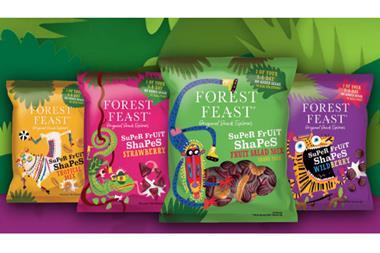
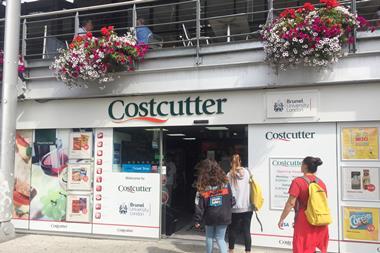
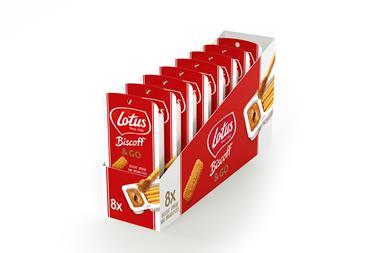
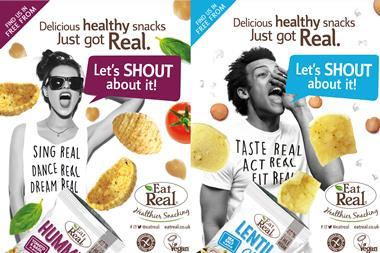
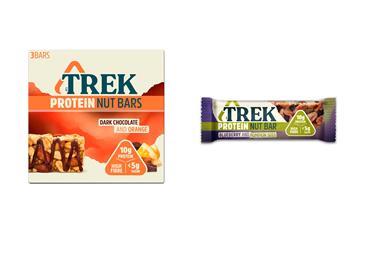
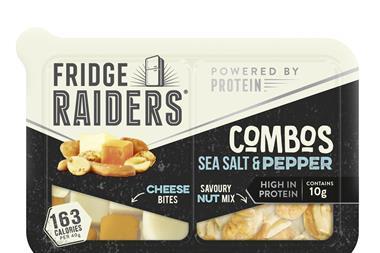






No comments yet